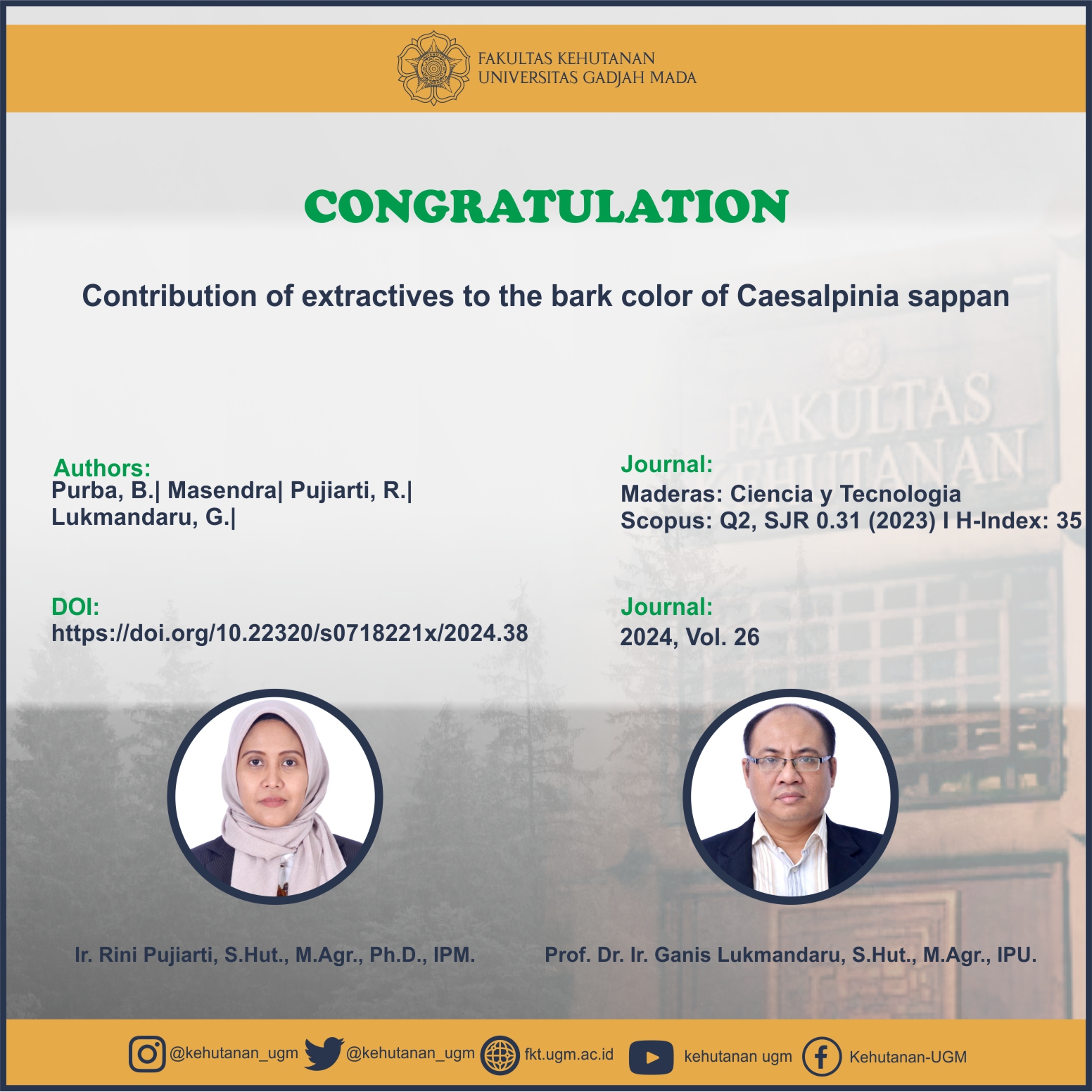
Abstract
The purpose of this study was toinvestigate the contribution of Caesalpinia sappan(sappan wood) bark extractives by analyzing color change of the barkafter extraction and the color of the extractswith several color measurement methods.Successive extraction was performed with n-hexane, ethyl acetate, methanol, and hot water. Color change of the bark was measured using CIELab color systemandthe extracts were analyzed with Ultraviolet-VisibleSpectrophotometer, total phenolic content (TPC), and Gas Chromatography Mass Spectrometry (GC-MS). The results showed that the highest change on the bark color after methanol extraction with the Δa*and Δb*values of-2,53 ± 0,60 and -3,64 ± 1,20 respectively. Also, methanol extract showed the highest total phenolic content(860,24±30,19 mg GAE/g).In addition, the Ultraviolet-Visibleis analysis showed a peakat 478 nm in the hot-water soluble extract and two peaksin the methanol soluble extract at 396 nm and 478 nm. Hydroquinone was detected as one of the major compounds by Gas Chromatography Mass Spectrometry in the methanol soluble extract.It was suggested that the color of Caesalpiniasappan (sappan wood) bark as well as the deep red coloration of itsextract might be contributed by multiple phenolic compounds contained in the methanol extract with hydroquinone as its precursor.Therefore, it is also a potential source for coloring matter.
SDGs:
1. SDGs 9:Industry, Innovation, and Infrastructure
2. SDGs 12:Responsible Consumption and Production
3. SDGs 15:Life on Land
Link Dokumen:
Download
